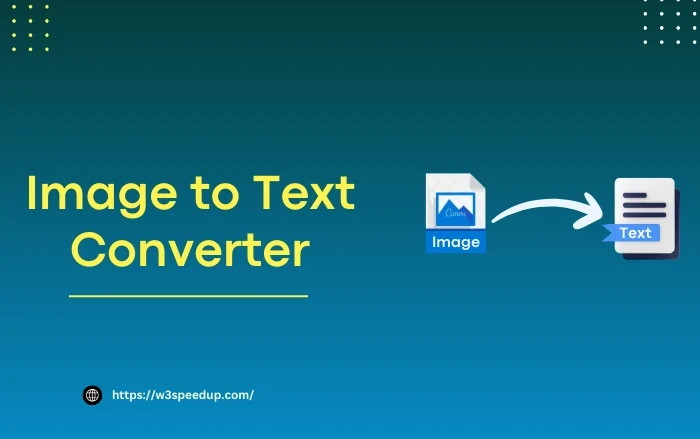Success in the corporate world depends a lot on productivity. The more productive you are in a corporate profession, the better your performance will be. So, in order to elevate their performance, professionals use numerous forms of technology. One such example is an OCR tool (also known as an image-to-text converter).
As the name indicates, an OCR or image-to-text tool is a type of technology that automates the process of extracting typography from pictures. People from a variety of business backgrounds employ such utilities because of their automated approach. So, in this post, we’ll focus on those uses.
But before getting to the usages of photo to text converters, we’ll discuss the evolution and working mechanisms of those tools. So, without wasting any time, let’s begin.
How Have the Picture to Text Converters Evolved Over Time?
Previously, image-to-text tools relied on traditional ways to extract text from pictures. Those ways included techniques like template matching. So, the OCR utilities of the old days used to recognize the characters through their orientations, shapes, and sizes. Plus, these photo to text converters compared the extracted features with the templates inside their database. Due to the limitation of templates, they often failed to recognize multilingual content. But the development of artificial intelligence, particularly in the realm of OCR technologies, has truly leveled up the game.
The image to text converter of modern times also uses feature extraction. But these utilities take aid from the training of their machine learning models. Since their models have already been programmed through the shapes, sizes, and orientations of characters belonging to various languages, the modern versions of OCR tools operate more accurately. Thus, the AI-based picture to text conversion system provides more robust and accurate character recognition than traditional approaches.
Image to Text Converters for Corporate Professionals
Today’s photo to text converters employ cutting-edge machine learning algorithms and deep learning models to analyze and process images. The integration of advanced technologies increases the accuracy of such tools. Therefore, corporate professionals employ state-of-the-art OCR utilities in various aspects of their domains. Some of their most common uses are given below:
 1. Data Entry
1. Data Entry
Image-to-text tools can streamline the process of data entry. Since the modern form of such utilities performs accurate text extraction from pictures, corporate professionals can integrate them into their workflows. Doing so will especially prove helpful when working with big collections of text-containing images, like scanned papers or photographs. So, by automating the data inputting procedures via OCR tools, business experts can lower the possibility of mistakes and save significant time.
 2. Documentation
2. Documentation
Individuals belonging to the corporate world often use pictures to explain complicated information in an easier manner. But by using image to text converters, they can ensure the accuracy of the content used in photos. For instance, OCR tools can help business executives turn pictures into text-based documents like articles, presentations, or reports. Doing so will make it easier to edit and format the content. Plus, this conversion will also guarantee the display of correct information.
 3. Data Analysis
3. Data Analysis
This era of technology has spiked the usage of digital photographs in the corporate world. Therefore, having an OCR tool is now crucial for companies that process data. Photo-to-text converters make it easier to analyze and manipulate textual data. So, people working in the data analysis area can swiftly extract text from pictures. This will make it easier for data analysts, researchers, or data scientists to get deeper insights and make evidence-based decisions.
 4. Content Creation
4. Content Creation
The attention span of people has been reduced due to the availability of short forms of content. But even in these times, several corporations provide the services of textual content in the shape of blogs, marketing materials, and publications. One major portion of creating textual content is related to the incorporation of visuals, especially pictures. This is where content creators can make use of OCR tools. By employing picture-to-text converters, creators can convert visuals into engaging text. Doing so will eventually prove beneficial in elevating the readability and overall attractiveness of the material.
 5. Accessibility and Compliance
5. Accessibility and Compliance
Some business sectors strive to give the general public and disabled individuals equal chances. So, people belonging to that part of the corporate world can use OCR tools to enhance the accessibility of information for individuals with disabilities. By converting pictures to text, they can meet readability and formatting standards and allow equitable access to information. Doing so will assist those organizations in staying true to their missions.
 6. Searchability and Indexing
6. Searchability and Indexing
In the corporate world, companies often have to deal with data retrieval. So, by taking aid from OCR tools, they can elevate this aspect. All the image-to-text tools allow quick and efficient extraction of typography from digital photographs. Therefore, corporate professionals can use such tools to search and index data directly from the content of the pictures.
To Conclude — Summing Up
All in all, image to text tools have become indispensable utilities for corporate executives in a variety of fields. These technologies enable the effective conversion of photos into text. From data input to analysis, content production to accessibility, these OCR solutions provide several advantages that improve productivity, accuracy, and cooperation in the workplace. Therefore, people in the corporate world should invest in a reliable picture to text conversion tool. Doing so can greatly increase their productivity and streamline many duties inside their business.
 Christmas Mega Sale – Enjoy Up to 50% OFF on Every Plan!
Christmas Mega Sale – Enjoy Up to 50% OFF on Every Plan! 


